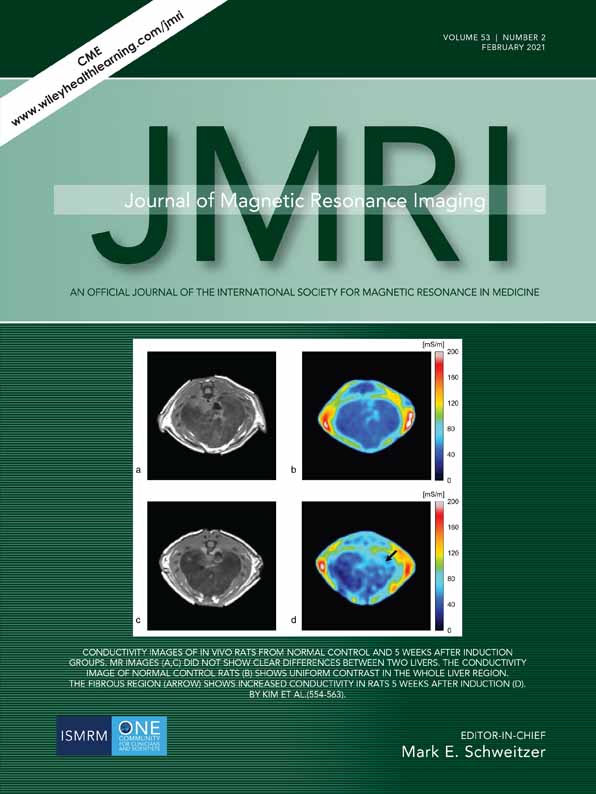Prognosis Prediction in Initially Diagnosed Multiple Myeloma Patients Using Intravoxel Incoherent Motion-Diffusion Weighted Imaging and Multiecho Dixon Imaging
Contract grant sponsor: Basic Science Research Program through the National Research Foundation of Korea (NRF) funded by the Ministry of Education; Contract grant number: 2019R1C1C1007122.
Abstract
Background
Multiparametric MRI provides complementary information for the diagnosis and management of multiple myeloma (MM).
Purpose
To evaluate the association of prognostic factors of MM and parameters derived from intravoxel-incoherent motion diffusion-weighted imaging (IVIM-DWI) and multiecho (ME) Dixon.
Study Type
Retrospective.
Population
In all, 78 MM patients.
Field Strength/Sequences
T1-weighted turbo spin-echo sequences (TSE), IVIM-DWI, ME 3D gradient echo sequence with multistep adaptive fitting at 3T.
Assessment
The region of interest (ROI) on the vertebral body was independently measured on four parametric maps (Dslow, Dfast and perfusion fraction [f], and proton-density fat-fraction [Ff] maps) by two readers. All patients were categorized into three groups based on the International Staging System (ISS).
Statistical Tests
Three groups were compared using analysis of variance (ANOVA) and post-hoc tests with Bonferroni correction. Logistic regression analysis was performed to predict the advancement of disease (early vs. advanced). Principal component analysis (PCA) was used to find the deterministic parameters.
Results
Dslow and Ff were significantly different among ISS-1 (n = 38), ISS-2 (n = 22), and ISS-3 (n = 18) groups in both readers: 0.36, 0.41, and 0.58 × 10−3 mm2/s for Dslow (P < 0.05), and 46%, 30%, and 15% for Ff (P < 0.05) in reader 1; 0.34, 0.41, and 0.58 × 10−3 mm2/s for Dslow (P < 0.05), 43%, 27%, and 13.2% for Ff (P < 0.05) in reader 2, respectively. Dfast between ISS-3 and the other groups was significantly different in one reader only: 2.03, 2.29, and 2.85 × 10−3 mm2/s (P < 0.05). There was no significant difference in f among the groups in both readers. Logistic regression by stepwise selection indicated Ff as the single most significant factor for differentiating early and advanced stages of MM with an accuracy of 76% and area under the curve (AUC) of 0.83 (P < 0.05). PCA revealed Ff, and Dslow as the deterministic parameters, with a cumulative proportion of 0.84.
Data Conclusion
D slow and Ff are associated with the prognostic factor of MM.
Level of Evidence 3
Technical Efficacy Stage 5.
J. MAGN. RESON. IMAGING 2021;53:491–501.




